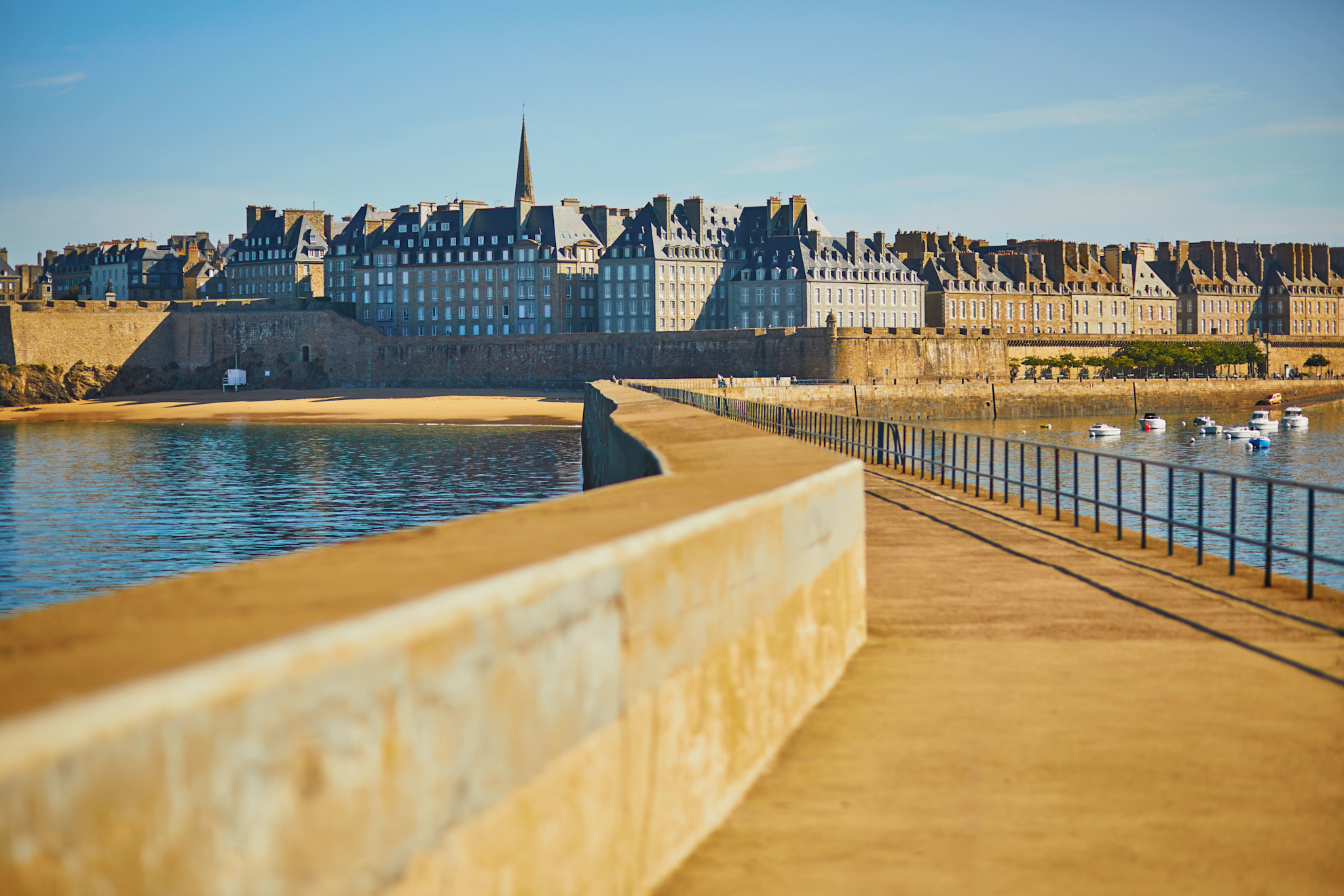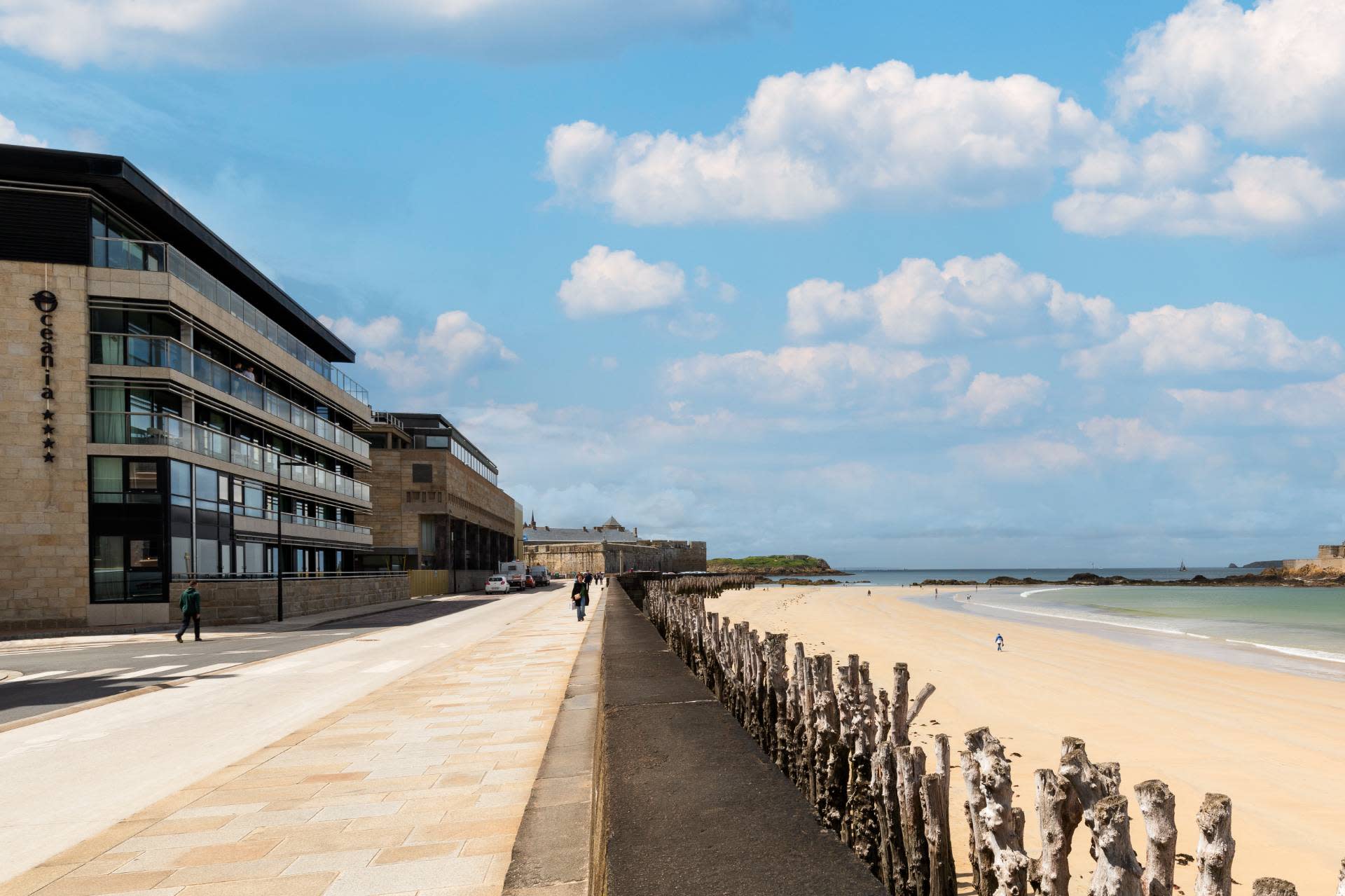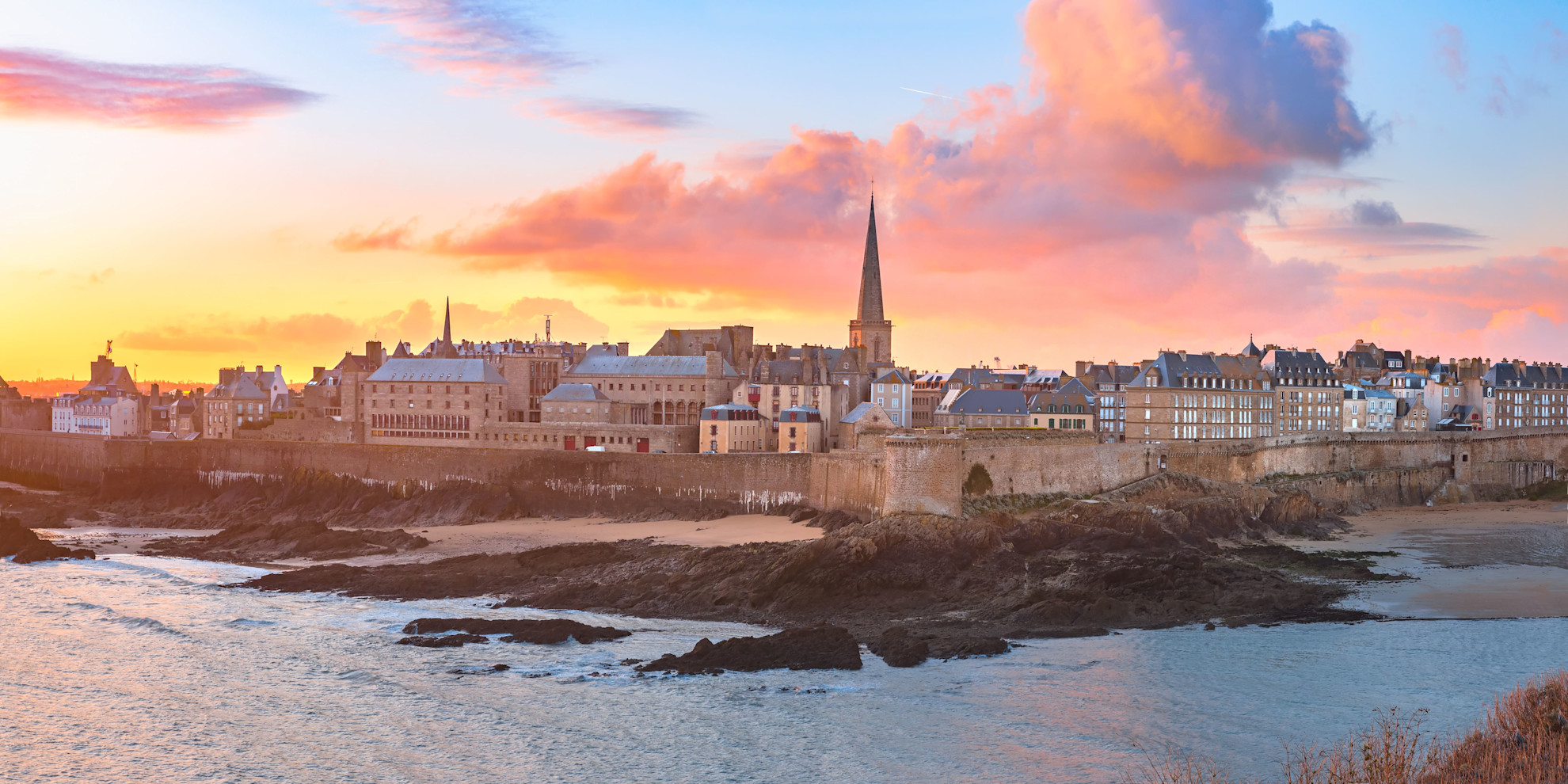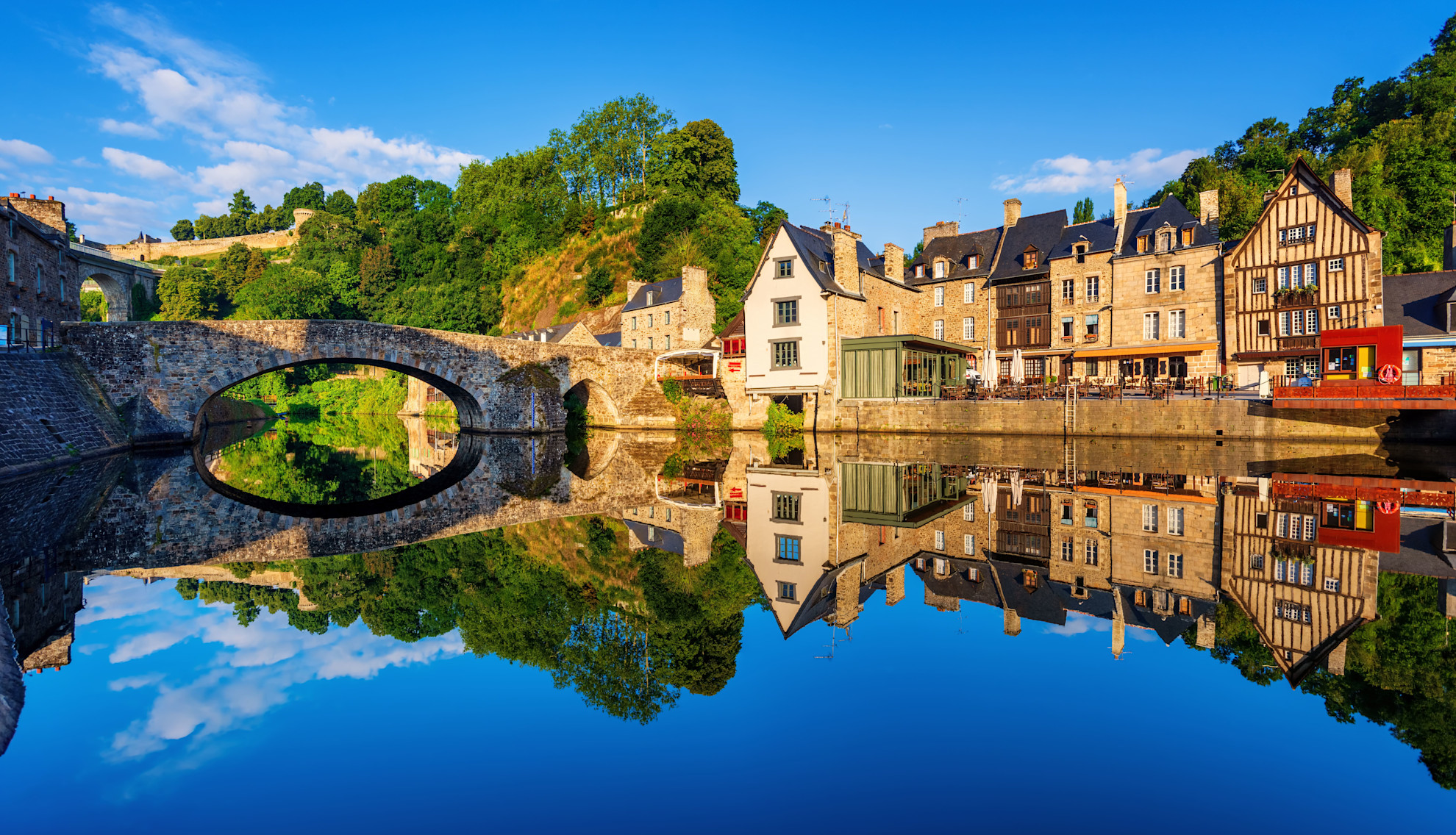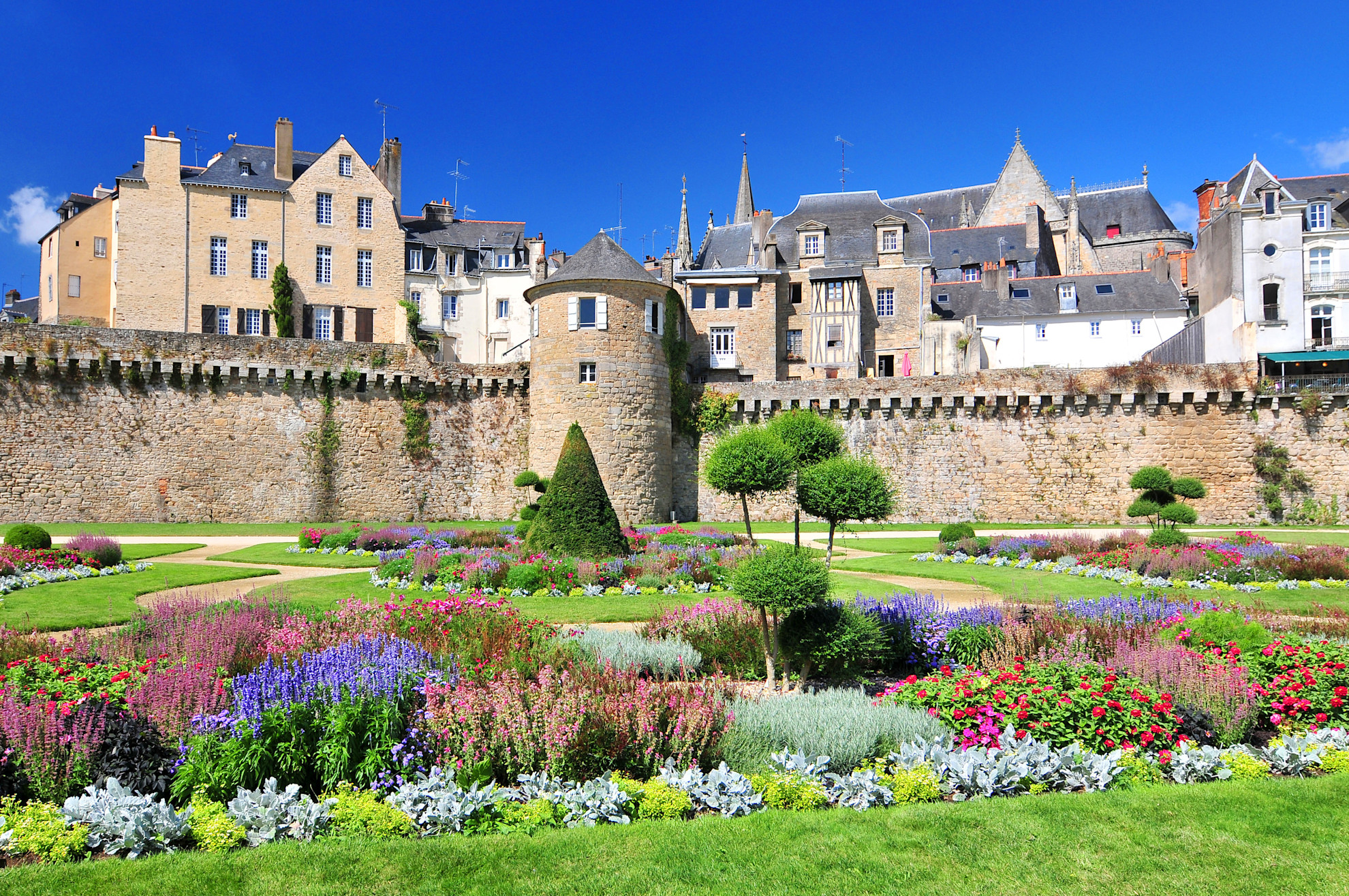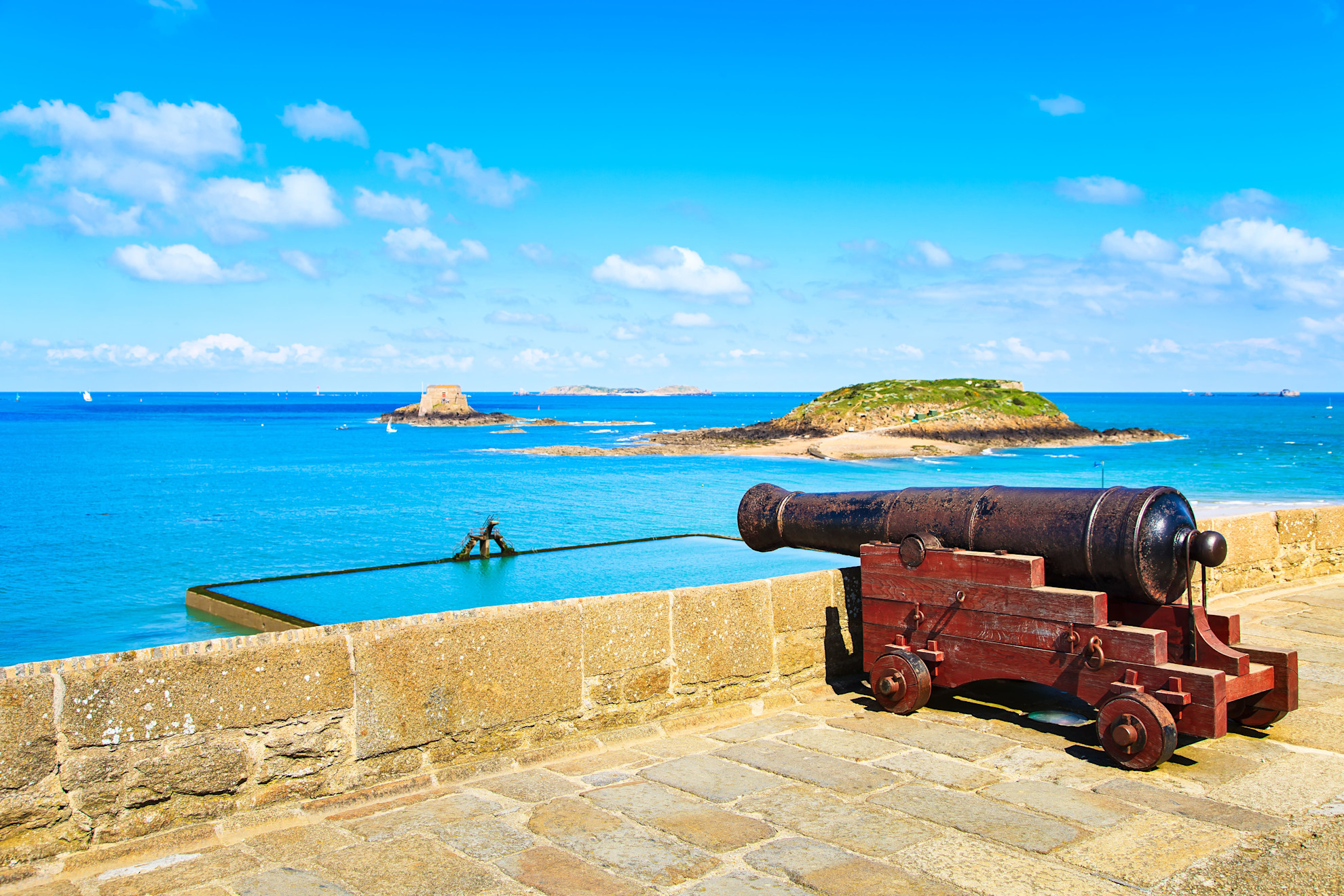
Explore St. Malo’s 12th-century ramparts and discover the city’s rich history.
Why St Malo is a Must for History Buffs
- Walk the Ramparts
- La Grand’ Porte
- Visit Fort National
- Visit Fort du Petit Bé
- Château de Saint-Malo
- Cathédrale Saint-Vincent
- St Malo’s Museums
St Malo is a city full of stories. This walled port city by the sea has a long, rich past, with its stone walls, forts, and narrow streets still echoing the spirit of sailors, traders, and pirates. Take a walk along the ramparts. Gaze out over the sea. Each step brings you closer to the past.
In this article, we’ll guide you through the best places to explore St Malo’s history, from the ancient walls of the old town to the forts that rise from the sea.
With regular ferry routes from the UK and nearby regions, getting to St Malo is simple. Whether you stay within the city’s historic walls or just steps from the sea, you’ll have the perfect base for your adventure. Book your trip now and dive into St Malo’s rich history, with plenty of exciting things to explore .
Walk the Ramparts
St Malo’s old town, known as Intra Muros which means "within the walls" in Latin, refers to the historic walled center of St Malo. This compact fortified old town is built on a rocky islet and enclosed by thick granite ramparts dating back to the 12th century. These ramparts were originally constructed to defend the city from pirates, foreign invasions, and attacks from the sea.
A St Malo walking tour of these ramparts offers a unique way to explore the walled city, taking about an hour to complete. As you stroll along the ramparts, you’ll enjoy stunning panoramic views. Admire landmarks like Fort National and St Malo Cathedral, and take in the sights of the harbour and nearby islands.
These historic ramparts provide an immersive experience of St Malo’s maritime heritage and strategic significance, allowing you to imagine how these defences once protected the city during battles of the past.
La Grand’ Porte
Before entering the historic walled city, you’ll pass through La Grand’ Porte, an impressive gate that plays a key role in St Malo’s fortifications, dating back to the 17th century.
Once a gateway for merchants, fishermen, and privateers entering or leaving the walled town, the gate is renowned for its grand architecture. Featuring a large archway and the city’s coat of arms, it offers a picturesque entrance to the old town.
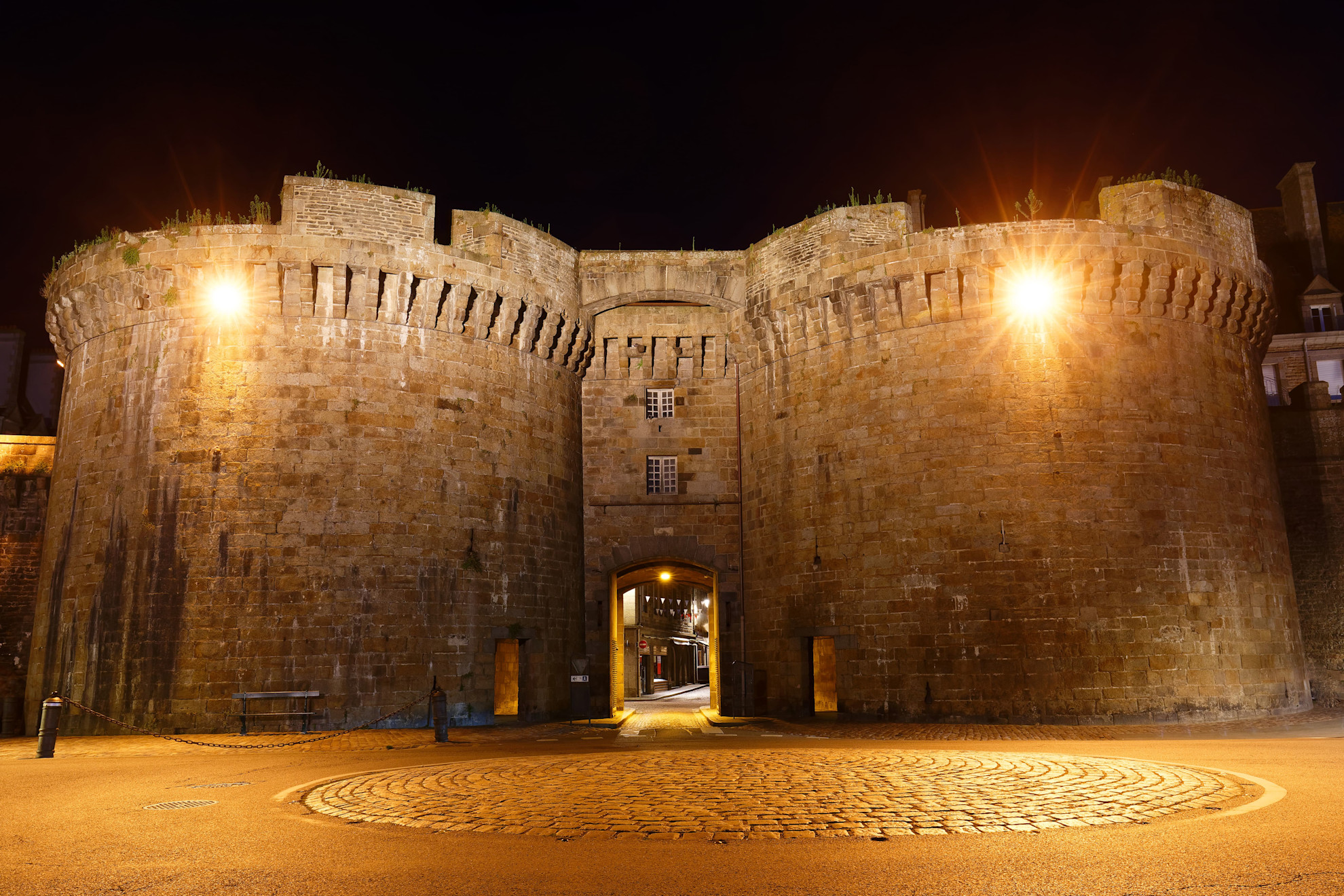
Pass through La Grand’ Porte, the old gateway for merchants and privateers.
Visit Fort National
St Malo’s Fort National offers a fascinating glimpse into the city’s military history. Built in 1689 by the renowned military architect Vauban, the fortress was designed to defend the city from naval attacks. Located on a small island, the fort is accessible on foot during low tide, just a short walk from the Grande Plage.
Inside, history enthusiasts can explore the barracks, examine the cannons once used in battle, and learn about the fort’s role in conflicts such as the Siege of St Malo in 1944. Beyond its historical significance, the fort also offers stunning views of the Emerald Coast and St Malo’s walled city, making it a must-see for both history lovers and photographers.
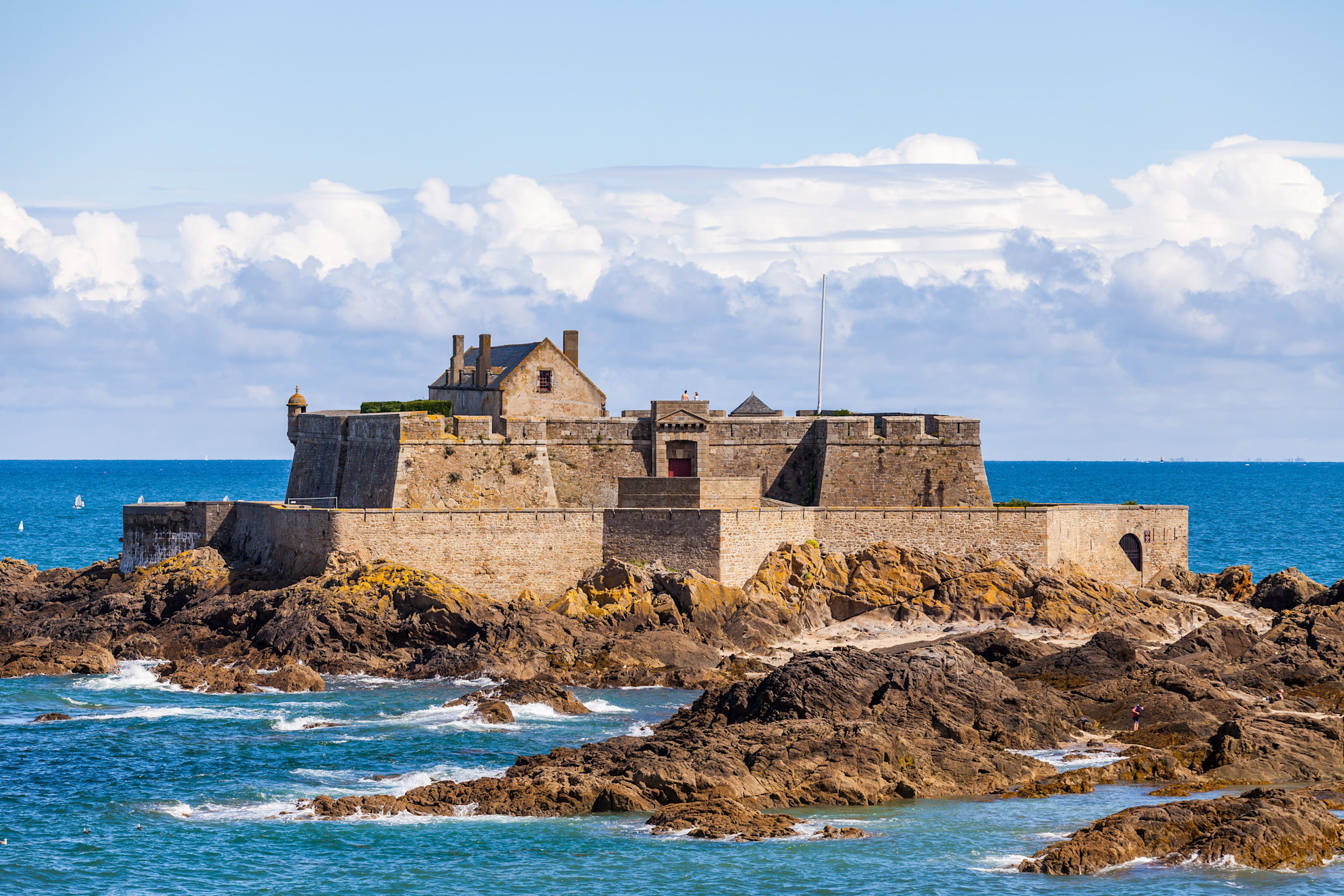
Walk to Fort National at low tide and discover how it defended St. Malo from sea attacks.
Visit Fort du Petit Bé
If Fort National leaves you craving more forts to explore, the Fort du Petit Bé offers another fascinating chapter of military history. Another example of Vauban’s architecture, this fort sits on a small island in St Malo’s Bay.
Built to withstand attacks and protect the city, the fort is accessible on foot during low tide. Visitors can explore its well-preserved structures, including the cannons and underground passages, making it an intriguing stop for history enthusiasts and anyone interested in the region’s military heritage.
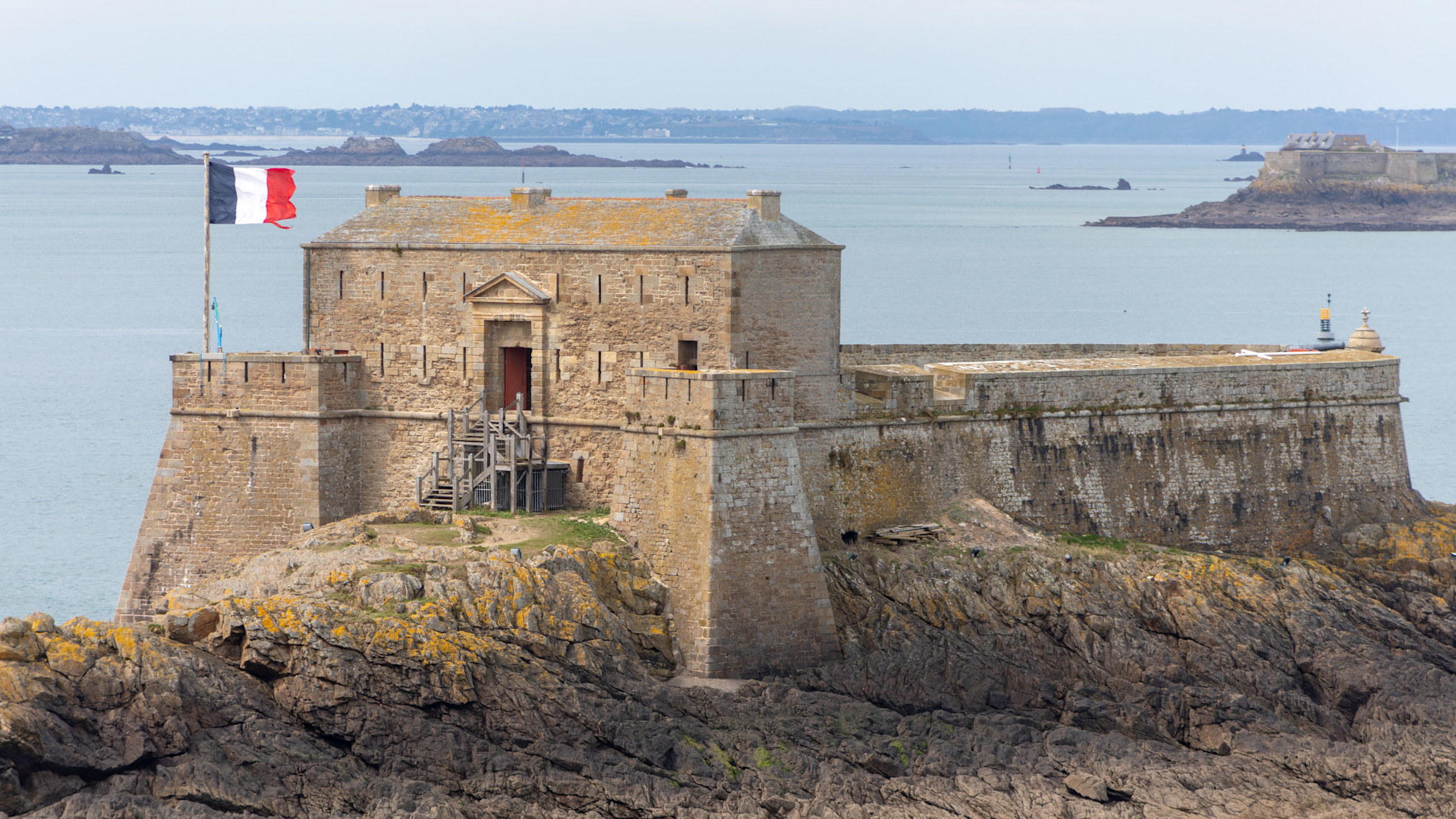
Visit Fort du Petit Bé to explore the region’s military heritage.
Château de Saint-Malo
Visiting the Château de Saint Malo offers a journey through the city’s rich past. Built between the 15th and 17th centuries by the Dukes of Brittany, this impressive fortress stands at the entrance to the walled city.
Today, the château is home to the Musée d'Histoire de la Ville et du Pays Malouin, where you can explore exhibits on St Malo’s maritime history, its privateers, and the city’s pivotal role in global exploration. Don’t miss the chance to climb the castle towers for panoramic views of the old town, the bustling harbour, and the surrounding coastline.
For history enthusiasts, the château is a must-visit, offering a deeper understanding of St Malo’s strategic importance and vibrant heritage.
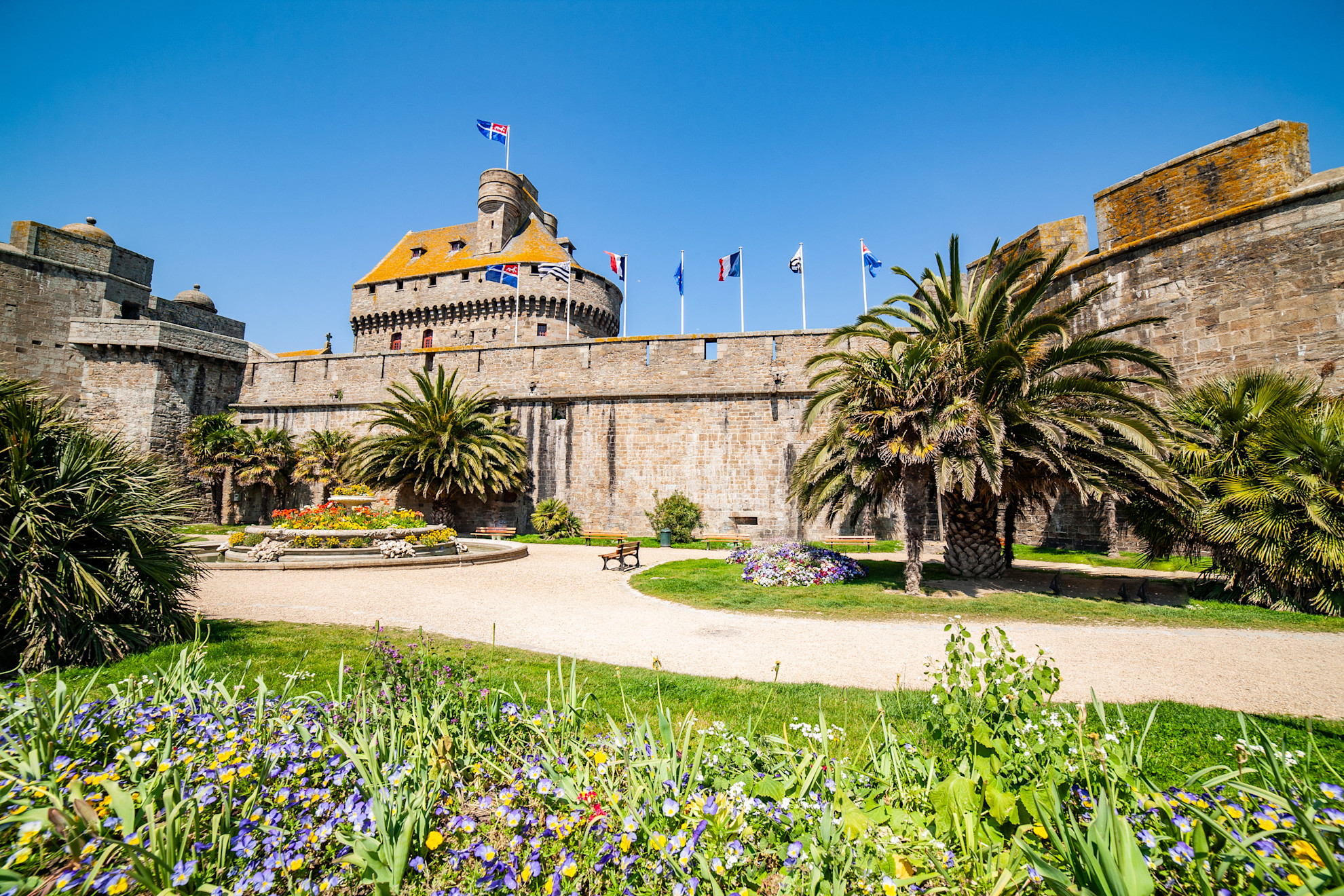
The impressive Château de Saint-Malo guards the entrance to the walled city.
Cathédrale Saint-Vincent
Built between the 12th and 18th centuries, St Malo Cathedral showcases a stunning blend of Gothic and Romanesque architecture. Though damaged during World War II, it has been beautifully restored, featuring intricate stained-glass windows that depict scenes from the city’s storied past.
The cathedral is also the final resting place of the renowned explorer Jacques Cartier, who discovered Canada. Walking through its serene nave and chapels offers a contemplative experience, making it a must-see for those interested in history, architecture, and St Malo’s rich heritage.

Explore St Malo Cathedral’s striking Gothic and Romanesque architecture, built from the 12th to 18th centuries.
St Malo’s Museums
St. Malo’s story goes far beyond its iconic ramparts. Its museums invite you to step into the city’s adventurous, resilient, and seafaring past. They tell powerful stories of brave sailors, famous explorers, and life during war. If you want to truly understand the city, these are the places to go:
Musée d'Histoire de la Ville et du Pays Malouin: Learn how St Malo grew from a medieval fortress into a busy port. This museum, inside the old castle, gives you a full picture of the city’s past.
Address: Place Chateaubriand
Musée des Terre-Neuvas et de la Pêche: Find out what it was like for the fishermen who crossed the Atlantic to catch cod near Newfoundland. The displays show their hard lives and the dangers they faced at sea.
Address: 67 avenue de Moka
Musée Jacques Cartier: Visit the home of Jacques Cartier, the explorer who sailed from here to Canada in the 1500s. The museum tells the story of his voyages and how they changed history.
Address: Rue David Macdonald Stewart
Etoile du Roy: Step onto this full-size replica of an 18th century privateer ship. Walk the decks, explore the cabins, and learn how St Malo’s sailors fought and traded during the Age of Sail.
Address: 17 Quai Duguay-Trouin
Mémorial 39/45: Built in real WWII bunkers, this museum tells the story of St. Malo, from occupation to destruction and liberation in 1944.
Address: Fort de la cité d’Alet
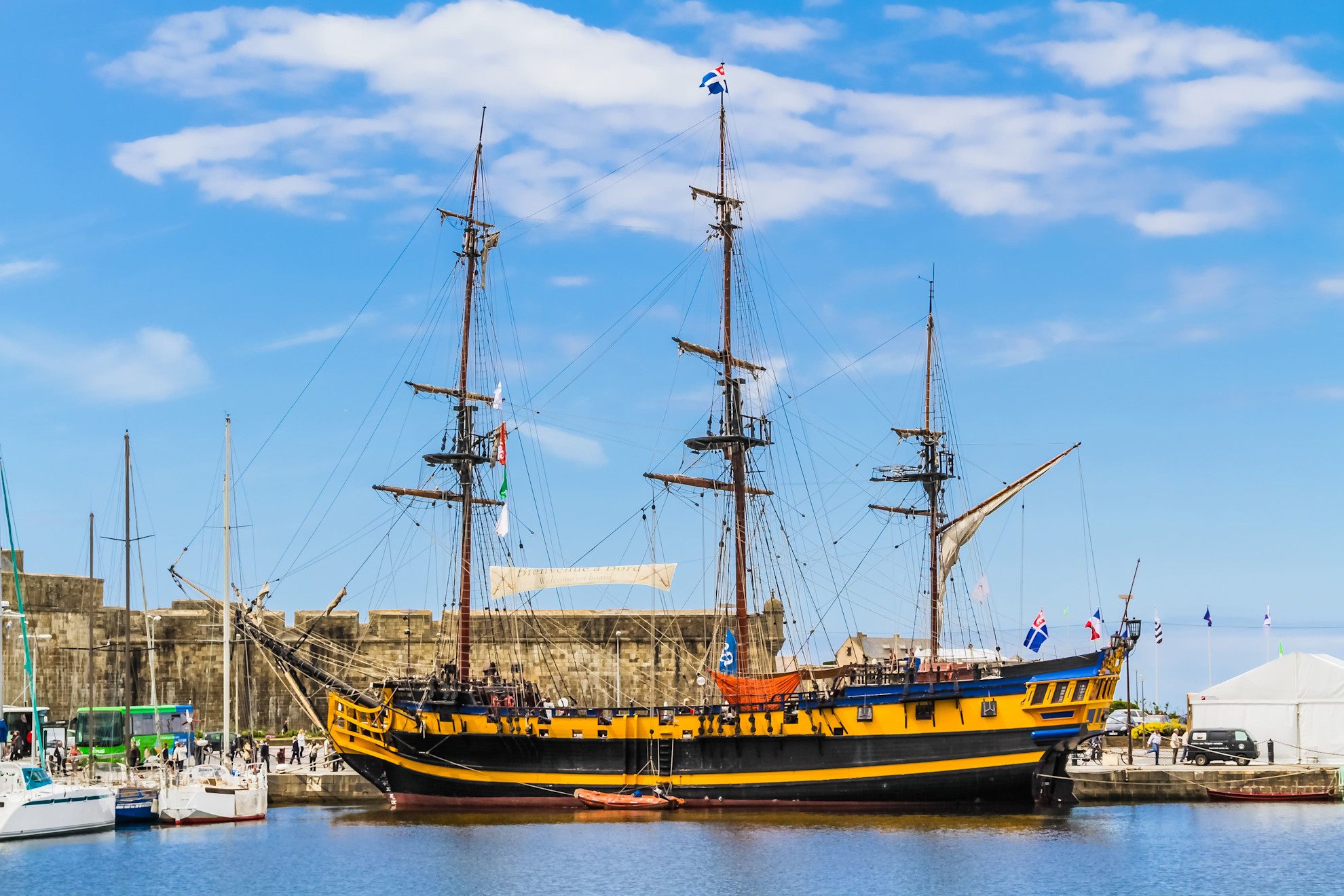
Step aboard the Etoile du Roy, a full-size replica of an 18th-century privateer ship.
St Malo is full of fascinating history, especially for those interested in military and seafaring stories. It’s also a beautiful place to visit, with cobbled streets, great restaurants, local shops, and amazing sea views.
Book your ferry with us and arrive right in the heart of this historic city. To make the most of your stay, choose from a range of places to stay, whether it’s a cozy hotel inside the old city walls or a seaside chalet campsite spot just a short walk from the beach.
Top articles about St Malo
WANT TO EXPLORE FURTHER?
Join our mailing list to receive travel inspiration, our latest 168澳洲体彩幸运10开奖官方开奖结果 实时直播 历史号码 精准数据统计news & offers
By signing up, you accept to receive news, travel ideas, special offers, communications following an abandoned basket from Brittany Ferries 澳洲幸运10十168体彩开奖网 and information about our partnerships. You can unsubscribe at any time by clicking on the link at the bottom of each of our commercial emails. For more information, please read our privacy policy.




